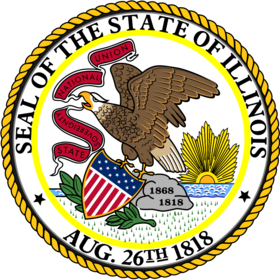Grade 5 - PARCC Examples of Opportunities & Connections
PARCC Examples of Opportunities & Connections
Connections among Standards, Clusters or Domains
The work that students do in multiplying fractions extends their understanding of the operation of multiplication. For example, to multiply a/b x q (where q is a whole number or a fraction), students can interpret a/b x q as meaning a parts of a partition of q into b equal parts (5.NF.4a). This interpretation of the product leads to a product that is less than, equal to or greater than q depending on whether a/b < 1, a/b = 1 or a/b > 1, respectively (5.NF.5).
Conversions within the metric system represent an important practical application of the place value system. Students’ work with these units (5.MD.1) can be connected to their work with place value (5.NBT.1).
Opportunities for In-Depth Focus
5.NBT.1 The extension of the place value system from whole numbers to decimals is a major intellectual accomplishment involving understanding and skill with base-ten units and fractions.
5.NBT.6 The extension from one-digit divisors to two-digit divisors requires care. This is a major milestone along the way to reaching fluency with the standard algorithm in grade 6 (6.NS.2).
5.NF.2 When students meet this standard, they bring together the threads of fraction equivalence (grades 3–5) and addition and subtraction (grades K–4) to fully extend addition and subtraction to fractions.
5.NF.4 When students meet this standard, they fully extend multiplication to fractions, making division of fractions in grade 6 (6.NS.1) a near target.
5.MD.5 Students work with volume as an attribute of a solid figure and as a measurement quantity. Students also relate volume to multiplication and addition. This work begins a progression leading to valuable skills in geometric measurement in middle school.
Connecting Mathematical Content and Mathematical Practices
When students break divisors and dividends into sums of multiples of base-ten units (5.NBT.6), they are seeing and making use of structure (MP.7) and attending to precision (MP.6). Initially for most students, multidigit division problems take time and effort, so they also require perseverance (MP.1) and looking for and expressing regularity in repeated reasoning (MP.8).
When students explain patterns in the number of zeros of the product when multiplying a number by powers of 10 (5.NBT.2), they have an opportunity to look for and express regularity in repeated reasoning (MP.8). When they use these patterns in division, they are making sense of problems (MP.1) and reasoning abstractly and quantitatively (MP.2).
When students show that the volume of a right rectangular prism is the same as would be found by multiplying the side lengths (5.MD.5), they also have an opportunity to look for and express regularity in repeated reasoning (MP.8). They attend to precision (MP.6) as they use correct length or volume units, and they use appropriate tools strategically (MP.5) as they understand or make drawings to show these units.
Examples of Linking Supporting Clusters to the Major Work of the Grade
Convert like measurement units within a given measurement system: Work in these standards supports computation with decimals. For example, converting 5 cm to 0.05 m involves computation with decimals to hundredths.
Represent and interpret data: The standard in this cluster provides an opportunity for solving real-world problems with operations on fractions, connecting directly to both Number and Operations — Fractions clusters.
